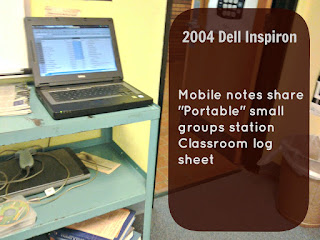 |
| Such enthusiasm. A world where I still flipped up my hair in the front (and pulled it off.) |
1. First year teachers will try anything.
If you were anything like me, you were always willing to lend an ear to someone with a different strategy for illustrating properties of equality, tactfully contacting parents of difficult students, increasing engagement, or establishing routines. The further I get into my teaching career, the less willing I feel to take a new tip.
2. First year teachers don't have bad experiences and classroom baggage.
Remember that first student who tried to drive you bananas? The first time you felt like an administrator didn't support you? The first time your perfect lesson bombed? The first time your students disappointed you? The first time you disappointed your students? Ever wish you didn't? The longer we teach, the more we have to forgive, the shorter memory we require, and the greater courage we muster to put ourselves out there again.
3. First year teachers "wing it" less.
Before you start to feel like a vet, there are those 1,2,3 years where you don't. Where planning ahead isn't a luxury and "good professional practice" - it's a necessity just to get through your lessons.
Now that the level of structure and planning is on my terms, I know that proper planning for instruction really is best, and that my worst days teaching usually come on the days I'm least prepared. My students are less focused, my transitions take longer, and fewer students are engaged. Granted, winging it is helpful for the days you're distracted by family demands at home or you're a bit under the weather, but prepping like a rookie usually keeps my teaching fresh.
4. First year teachers follow policies. (For better or worse).
As ridiculous, redundant, or reactionary as some of the bureaucratic hoops we have to jump through may be, by George, I was minding my ps and qs my first year. Some teachers are more likely to take one for the team and go through the motions than others, but even the most defiantly natured first year teacher will follow more policies. And sometimes (often?) following these policies really is best for maintaining school environment and student expectations.
4. First year teachers follow policies. (For better or worse).
As ridiculous, redundant, or reactionary as some of the bureaucratic hoops we have to jump through may be, by George, I was minding my ps and qs my first year. Some teachers are more likely to take one for the team and go through the motions than others, but even the most defiantly natured first year teacher will follow more policies. And sometimes (often?) following these policies really is best for maintaining school environment and student expectations.
5. First year teachers don't know what doesn't work.
This is connected some to #1, but because I didn't know what strategies "didn't" work, I was willing to try. I was amazed at the (proven) effective strategies from the Marzano group. I expected everything I picked up from PD expert my school brought in to work. (Sadly) I believed then that every PD my district would offer me was going to change me life. (And maybe it did because I believed it would.) This sometimes results in ineffective lessons I can avoid with more experience, but there's something to be said for the power of a positive attitude and an open mind.
*I say "better" because these are qualities of a good teacher that are inherent to new teachers that overcome other inadequacies. If we keep these qualities as we add experience, we slide into that professional growth sweet-spot. Master teachers are made.
 |
| We entered the city golf-cart Christmas Parade for Math Club. I'd label that under "crazy" these days. We're not Minnesota, but golf-carts on December 5th is still too cold. |
What about your first year experience do you wish you'd hung on to? What are you most glad is over?











